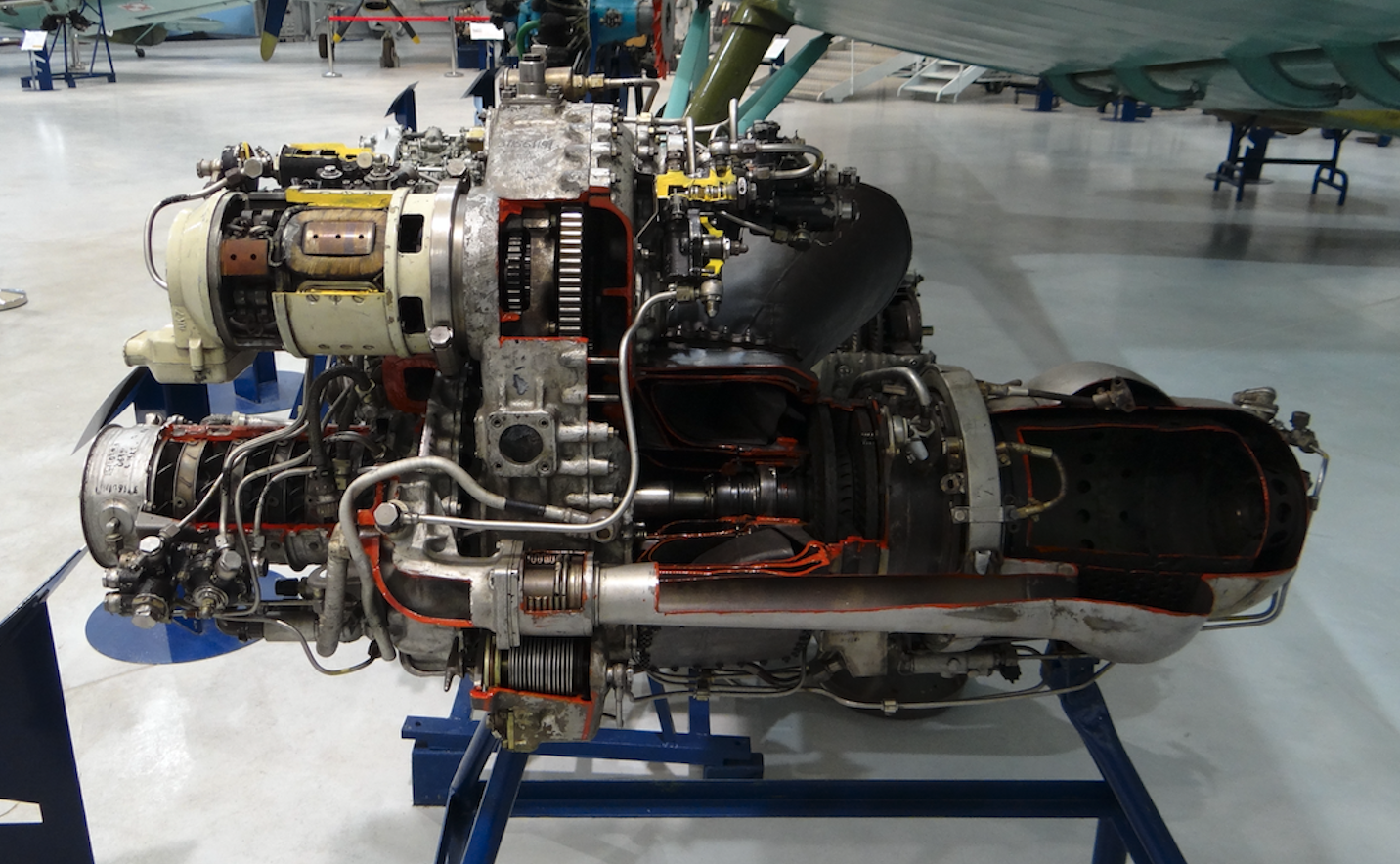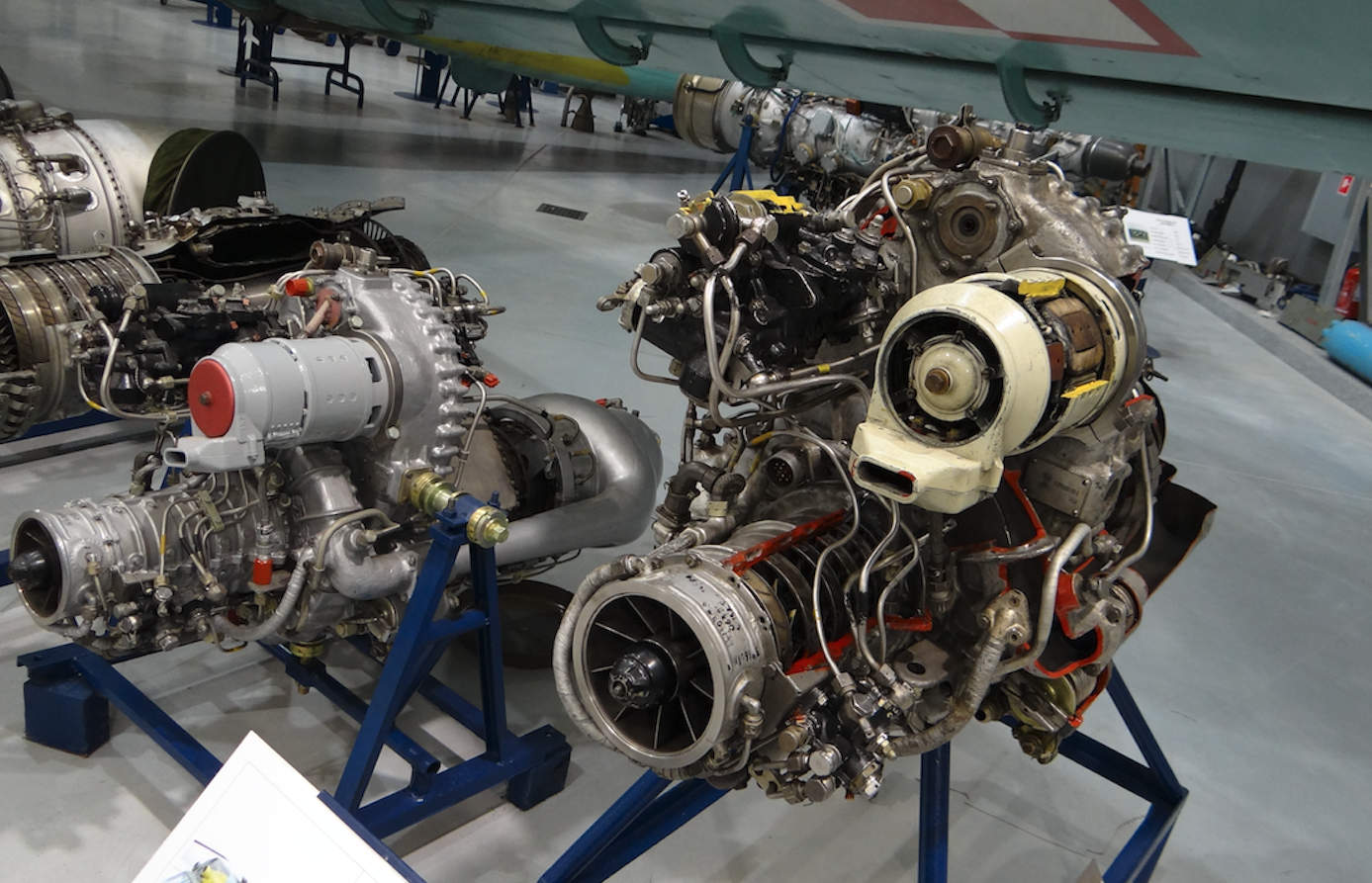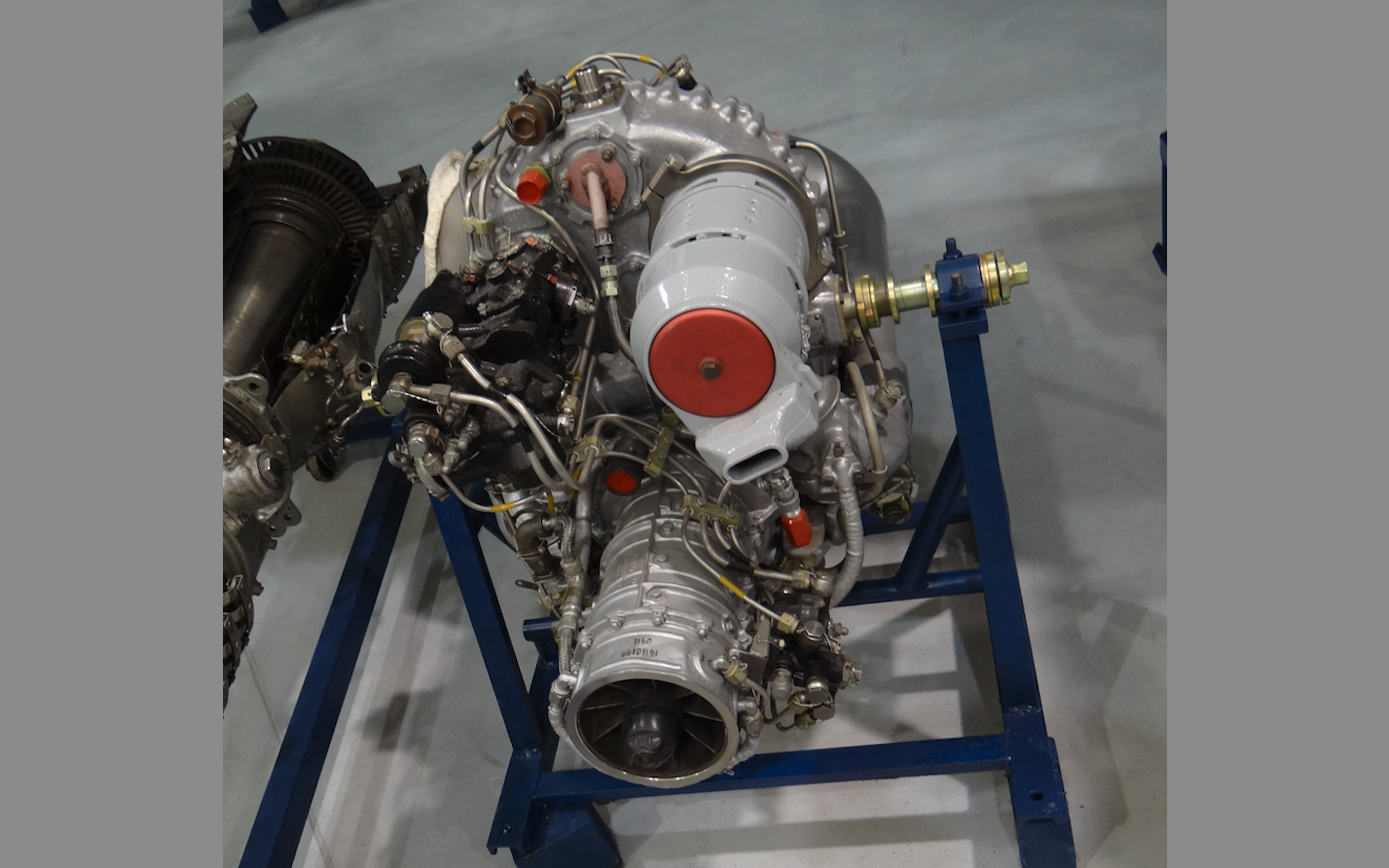Kraków 2022-12-08
Silnik turbinowy PZL GTD-350 do napędu śmigłowca PZL Mi-2.
Sowieckie śmigłowce Mil Mi-1 oraz Mil Mi-4 były napędzane silnikami tłokowymi. Na Zachodzie dojść powszechnie wprowadzono już silniki turbinowe. Moskale mieli duże trudności z opracowaniem własnych silników turbinowych dla napędu śmigłowców. Nielegalnie udało się im pozyskać Amerykański silnik Allison 250. Na jego podstawie zespół inżyniera Siergieja Izotowa opracował własny silnik, który oznaczono GTD-350. Pierwsze uruchomienie silnika nastąpiło w 1961 roku. Silnik w zespole dwóch egzemplarzy został wykorzystany w śmigłowcu Mi-2. Ponieważ moce przerobowe w gospodarce CCCP były niewystarczające, dlatego w 1966 roku, zawarto porozumienie na produkcję licencyjną silników GTD-350 w zakładach PZL WSK Rzeszów. Było to tym bardziej celowe, że cała produkcja śmigłowców Mi-2 została umieszczona w Polsce w PZL Świdnik. W Polsce zbudowano ponad 10 000 egzemplarzy silników GTD-350, a blisko 1 000 egzemplarzy zbudowano w CCCP.
Silnik turbinowy typu GTD-350 jest przeznaczony do pracy w dwusilnikowym układzie napędowym śmigłowca PZL Mi-2.
Pierwsze wersje silnika GTD-350 miały resurs międzyremontowy zaledwie 200 godzin. W tym czasie, resurs śmigłowca Mil Mi-2 wynosił 1 000 godzin. Inżynierowie z PZL WSK Rzeszów wprowadzili wiele istotnych modyfikacji, dla wydłużenia resursu silnika. Udało się wydłużyć resurs silnika do 1 000 godzin.
Silnik składa się z 7-stopniowej sprężarki osiowej oraz jednego stopnia promieniowego (odśrodkowego). Dwa kanały powietrzne prowadzą sprężone powietrze do pojedynczej puszkowej komory spalania umieszczonej w tyle silnika. Komora spalania jest częściowo odwróconego przepływu, czyli konstrukcja opracowana przez Frank Whittle. Paliwo do komory spalania jest dostarczane przez dwa wtryskiwacze; jeden roboczy, umieszczony centralnie i jeden zapłonowy umieszczony nieco z boku, zintegrowany ze świecą zapłonową. Sprężarka napędzana jest przez pojedynczą turbinę. Kolejna wolna, 2-stopniowa turbina napędza główną przekładnię. Silnik posiada cztery otwory wylotu spalin, po dwa na stronę lewą i prawą. Ale tylko dwa otwory są wykorzystywane. Jeśli silnik jest zamontowany po lewej stronie to wyloty po prawej są zaślepione i na odwrót. Moc startowa wynosi 313 kW (425 KM), moc nominalna wynosi 235 kW (329 KM). Prędkość obrotowa sprężarki wynosi 45 000 obr/min. Prędkość obrotowa turbiny napędowej wynosi 24 000 obr/min. Prędkość obrotowa wyjścia z silnika wynosi 5 904 obr/min. Zużycie paliwa przy starcie wynosi 0,496 kg/kWh. Rozruch silnika elektryczny prądo-rozrusznikiem.
Moc z silników przekazywana jest poprzez wspólną dla dwóch silników przekładnię główną typu W2 do wirnika nośnego odbierającego moc bezpośrednio z przekładni głównej. Z przekładni głównej jest wyprowadzony także napęd do śmigła ogonowego, za pośrednictwem przekładni pośredniczącej i tylnej oraz do agregatów śmigłowcowych.
Silnik GTD-350 był produkowany w kilku wersjach: GTD-350, GTD-350P, GTD-350W, GTD-350W2. Silniki różniły się modyfikacjami i zastosowanymi materiałami. Silniki GTD-350 produkowane w Rzeszowie okazały się bardzo trwałe i mało awaryjne. Niestety, umowa zawarta z CCCP nie pozwalała na modyfikację silnika, aby go zastosować w innych konstrukcjach lotniczych. Ale pamietajmy, że już w 1961 roku, silnik GTD-350 był konstrukcyjne przestarzały i stosunkowo paliwożerny. Silnik na godzinę pracy, w nominalnych parametrach, zużywał 100 litrów nafty lotniczej.
Dane T-T silnika PZL GTD-350:
Długość 1,35 m. Szerokość 0,52 m. Wysokość 0,68 m. Masa 135 kg. Silnik ma moc 294 kW. Moc startowa wynosi 313 kW (425 KM), moc nominalna wynosi 235 kW (329 KM). Prędkość obrotowa sprężarki wynosi 45 000 obr/min. Prędkość obrotowa turbiny napędowej wynosi 24 000 obr/min. Prędkość obrotowa wyjścia z silnika wynosi 5 904 obr/min. Zużycie paliwa przy starcie wynosi 0,496 kg/kWh. Temperatura spalin przed turbiną wynosi 970 stopni Celsjusza.
Opracował Karol Placha Hetman




